Perak Court History
Pendahuluan
After the Pangkor Treaty (1874), the British Government made an attempt with relatively slow success to establish an English legal system in Perak.
Five years later they managed to establish their power and build police stations (huts) followed by courts and prisons.
Kinta District Officers not only act as Senior District Magistrates but also as Land Revenue Collectors who are given more priority.
Dr. H. W. C. Leech, the Kinta District Magistrate moved his office to the upper part of the river by building large buildings for himself and his staff at a place in the middle of Kota Bharu (Gopeng) where one could reach by steamboat across the river in a day. from Durian Sebatang (Anson Bay).
He also built police stations in Gopeng and Epoh (Ipoh), which were the main villages in the district in the same year until 1879.
The need to go to Kinta began in 1884. In 1882 there were 4000 Chinese miners in the area. By 1884 it had increased to more than 5000 people and in the following years increased to 9000 (1885), 18,000 (1886), 25,000 (1887) and 38,000 (1888).
The Kinta Magistrate's headquarters was moved to Batu Gajah in 1884 as the Kota Bharu area was no longer suitable.
A prison and a police station were built in Papan (Batu Gajah) in 1884. The Batu Gajah magistrate commuted once a week to Papan and heard court cases at the police station.
On 29 November 1887, riots took place at the Board and a trial was held immediately after the next few days of trial before His Royal Highness the Sultan of Perak, the British Resident and Dato' Panglima Kinta.
Two partners were hanged, nine partners were imprisoned and flogged and 12 partners were fined. After that police patrols consisting of Sikhs were created.
Courts and prisons on the Board ceased to function after the First World War.
The building and housing (quarters) of the first Magistrate's Court in Ipoh was completed in 1888. In October 1888, Mr. E.J. Brewster started the Police Court in Ipoh. He said this is to provide convenience to the public and the police.
In November 1888, Mr. E.J.C. Tranchell held the position of First Assistant Magistrate hearing minor cases in Batu Gajah and Gopeng three times a week.
Until 1889, there were three Lower Courts and one Court of Appeal in Kinta. Until 1895 Ipoh had turned into a city when teachers' offices were built and completed a year later.
On 14 November 1898 for the first time the Judicial Commissioner opened a court for criminal trials in Ipoh.
In 1903 Dato Panglima Kinta Mohammed Yusof a very rich Malay tin miner in the State of Perak built a house for himself. After he died the house was bought by the British Government and turned into a Courthouse in Ipoh.
On the 14th. May 1906 Mr. E.W. Birch officiated at the opening of the New Courthouse Building in Ipoh which is solidly built from dried logs. On the ground floor there is a row of stone pillars surrounding the building housing the offices of the Judicial Commissioner, Magistrate and Court officers. While the staircase with the veranda room leads to the upper part of the courts. This building is one of the best and most comfortable in the Federation of Malaya. This Court building is located on Jalan St. John's next to the Railway Goodsheds.
The first magistrate who started his duties in the New Court Building was Mr. E.A. Cooper is an Englishman who is fluent in Malay and Gurmukh (Punjabi). An additional Magistrate was appointed in 1915 to resolve the backlog of cases which had been increasing since 1904.
The Supreme Court was then moved to the Education Office in Jalan Maxwell (Old Building) due to the situation in the court building in Jalan St. John's is too noisy because it is too close to the train tracks. From there the Supreme Court was separated from the Lower Court for the first time.
In 1941, perhaps because the position of the Lower Court was close to the petrol oil tanks, this Court was bombed by the Japanese and it was completely destroyed.
During the Japanese occupation, this Lower Court was housed in a wooden building where the State Mosque is now.
In 1947 both the Magistrate's Court and the District Court moved to a new building which was temporarily constructed between the Railway Station and the Police Station. This location is where the first Ipoh Hospital was established before Ipoh Hospital moved to Jalan Anderson/Jalan Ashby.
In 1952, the two-storey building on Jalan Kelab occupied by the Court and the Post and Telegram Club was handed over to the Court. Thus a Traffic Court was created where it was placed on the upper floor. Therefore the total number of Courts at that time was as much as 4.
The first local magistrate was Tun Mustapha Albakri Bin Haji Hassan. He is a Second Class Magistrate. While the first Malayan Civil Service Officer to hold the position of magistrate was Tun Ismail Bin Mat Shah. The Lower Courts moved to the new building now, on the 1st. July 1975.
The Ipoh Sessions/Magistrate Court was officially opened by His Majesty the Sultan of Perak, Sultan Idris Al Mutawakkil Allallahi Shah Ibni Al Marhum Sultan Iskandar Shah Kaddasallah on Monday the 9th. August, 1976. This new building consists of a two-storey building and is located next to the Perak State Development Corporation and opposite the Perak State Legal Adviser's Office and the Di Raja Perak Golf Club.
The Subordinate Courts moved to the new building on the 1st. July 1975 and consists of 2 Sessions Courts and 4 Magistrates' Courts including the Traffic Court. The Ipoh Sessions/Magistrate Court acts as the Responsibility Center for 25 Courts including 5 High Courts
(Ipoh and Taiping), 6 Session Courts and 14 Magistrate Courts. As the Responsibility Center of the Ipoh Sessions Court manages all matters of Administration, Service, Finance and Development for all Courts throughout the State of Perak.
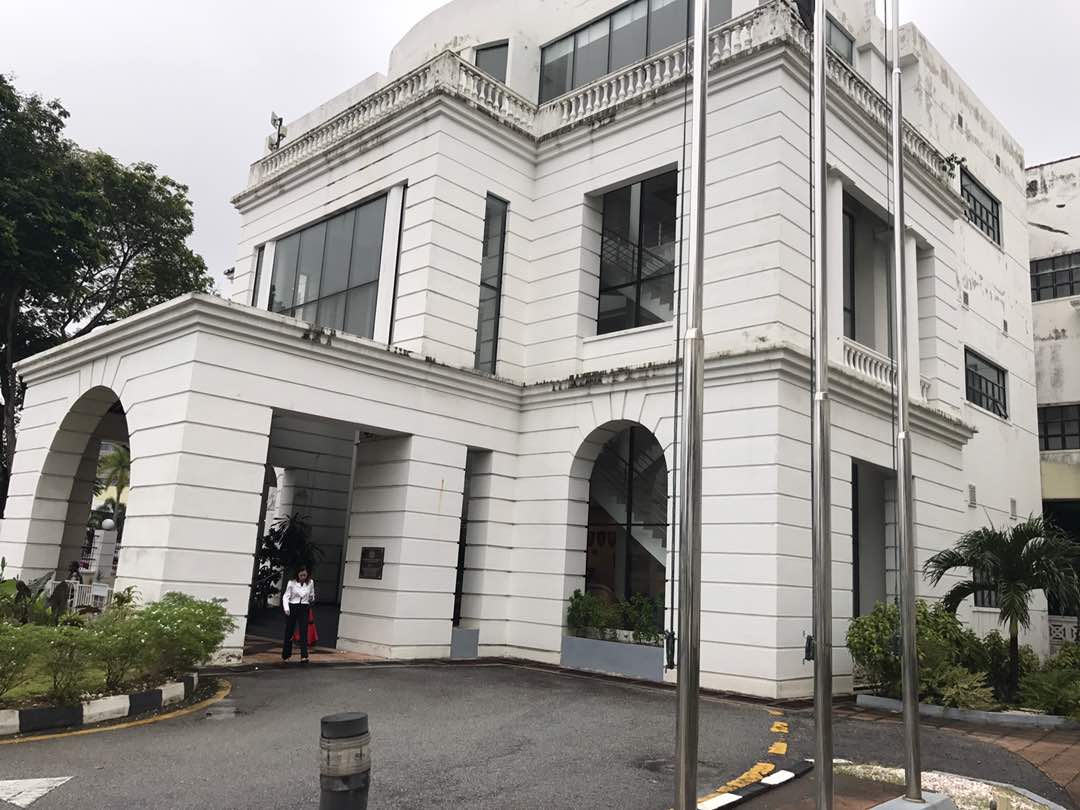
The structure of the new High Court building in Ipoh, Perak.
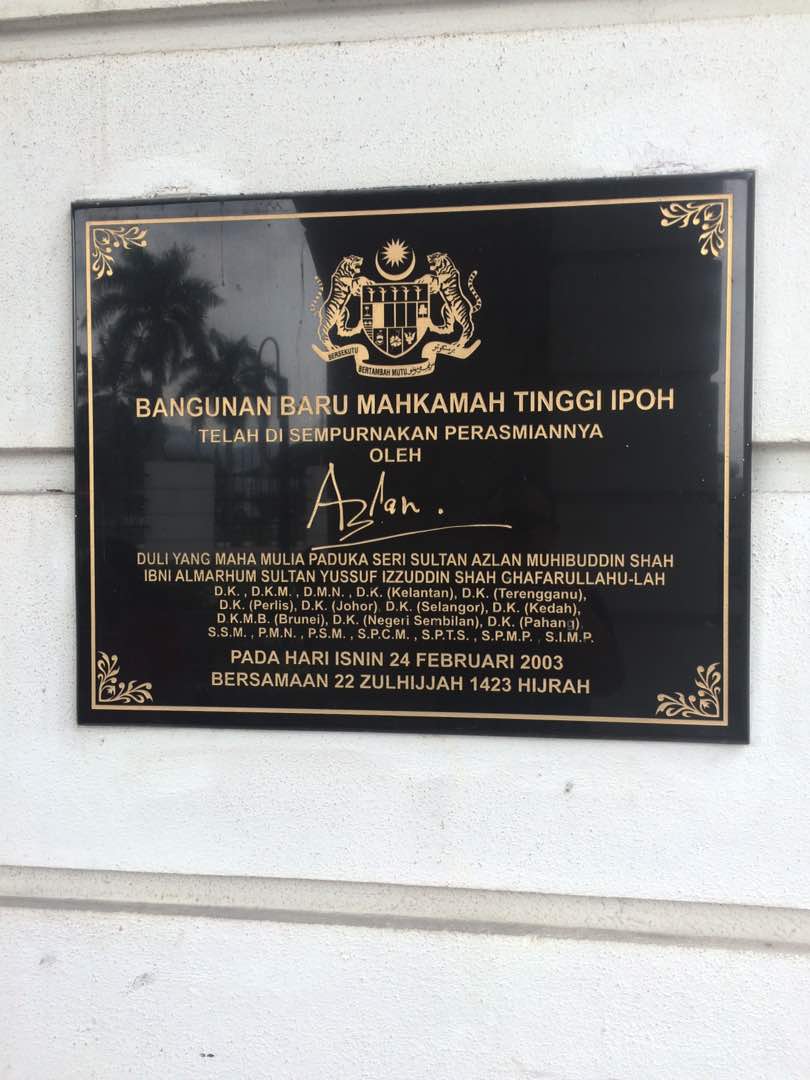
Plaque for the Inauguration of the New Building of the Ipoh High Court, Perak on 24.2.2003
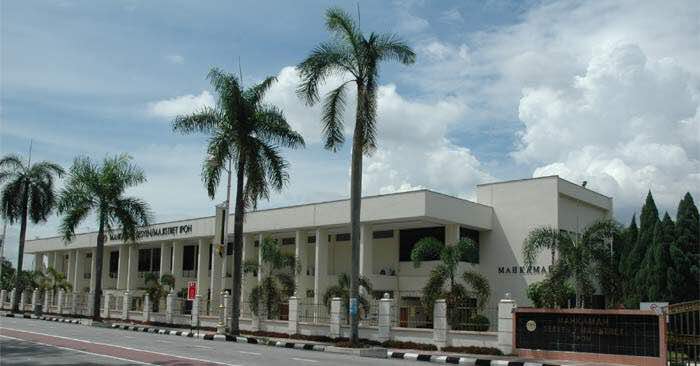
Structure of the old Ipoh Sessions and Magistrates Court Building

Remington Typewriter
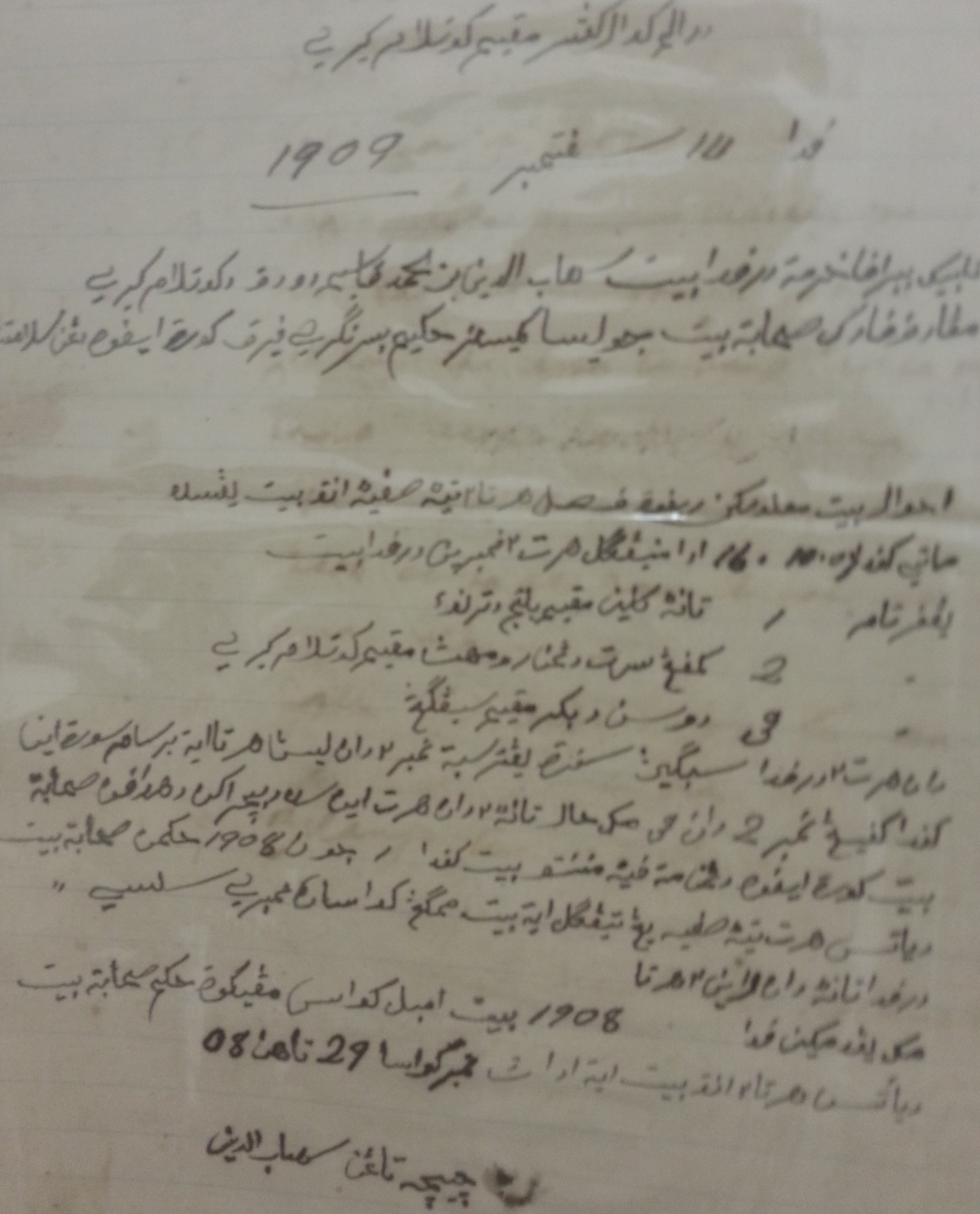
Power of Attorney for Kota Lama Kiri Subdistrict in Kuala Kangsar District
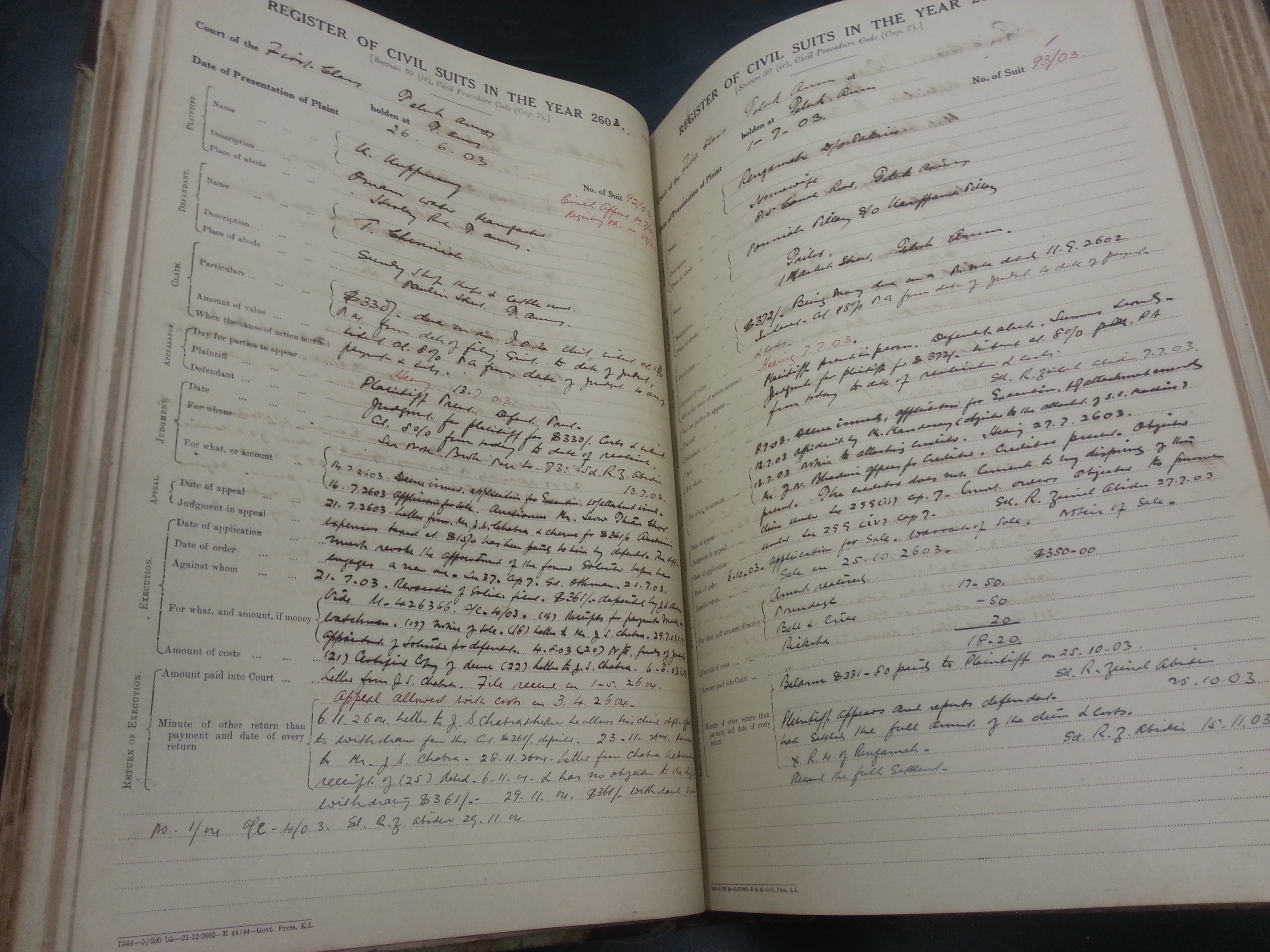
Perak Court Civil Register Book
